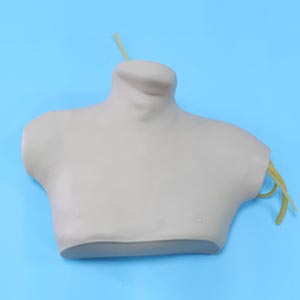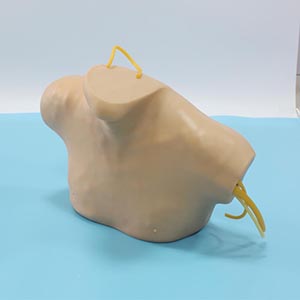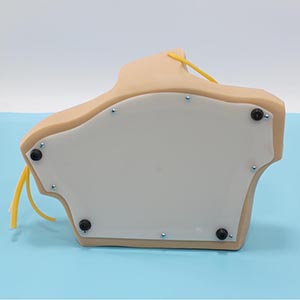Homepageпјҡ NEWS >> Central venipuncture intubation model: Can it effectively address complex clinical situations?
Central venocentesis intubation (CVC) is a basic skill in emergency and critical care medicine, widely used in intravenous drug injection, fluid infusion and monitoring of central venous pressure. However, in clinical operation, many factors such as the variation of the patient's anatomical structure, the difficulty of blood vessels to reach, and the change of the patient's position may affect the success rate of intubation. This makes the traditional training methods face many challenges. ** Does the central venipuncture intubation model ** address these complex clinical Settings to effectively improve the success rate of the procedure?
In traditional CVC training, students often rely on teacher demonstrations and limited practice opportunities, lacking the ability to simulate different clinical situations. For example, while mannequins and human specimens can provide some operational experience, they cannot reproduce the unique anatomical characteristics of different patients and the complex changes during intubation. The traditional simulation training environment is often unable to simulate factors such as variations in vascular anatomy, vascular obstruction, and small changes in operating Angle, which may lead to a high failure rate of students in actual clinical operations.

Central venous puncture intubation model
According to a study in the Journal of Vascular Access, the success rate of central venous puncture intubation in traditional training is **70%**, which is often reduced in clinical application due to individual patient differences and environmental factors (Liu et al., 2018). This shows that traditional training methods cannot fully cope with complex clinical situations.
** Central venipuncture intubation model ** can accurately simulate the anatomy of human blood vessels and adjust according to the physiological characteristics of different patients. For example, the model can simulate the anatomy of patients with obesity, old age or pathological changes (such as vascular sclerosis, vascular malformations, etc.) to help students understand how to choose the intubation path according to the different characteristics of patients. This allows participants to deal with changing clinical situations during training and to be fully prepared for practical operations.
A study published in The Resuscitation Journal showed that trainees trained with simulation models had a **25% higher success rate when faced with complex vascular anatomy (Thomas et al., 2020). By simulating different clinical situations, participants are able to gain experience in an environment without actual risk, improving their accuracy and confidence.
During CVC intubation, vascular resistance, vascular anatomy changes or incorrect catheter insertion Angle are often encountered, which brings great challenges to the operation. The advanced central venous puncture intubation model is equipped with a real-time feedback system, which can simulate various difficulties encountered during intubation and detect key indicators such as trainees' operating Angle, catheter depth, and pressure changes in real time. These models can simulate the tension, elasticity and resistance of blood vessels according to the trainees' operational feedback, so that students can respond quickly when they encounter similar situations.

A study in the Journal of Clinical Nursing showed that the simulated intubation model could effectively simulate vascular resistance and other unexpected situations during training, and the success rate of trainees in complex intubation scenarios was **30% higher than that of traditional training (Yang et al., 2021). This simulation training greatly improved the students' adaptability and clinical judgment ability.
The advanced training model can adjust the training content according to the specific needs and simulate different intubation difficulties. For example, the vascular structure of heart failure patients is simulated, and the intubation operation under extreme postures is simulated. This highly customized training method not only improves the accuracy of the trainees' operations, but also helps them learn how to make quick judgments in high-pressure, complex clinical situations.
Through this multi-scenario and multi-complexity training, students can accumulate a lot of clinical experience and provide more coping strategies for practical operation. According to data from the Vascular Access Journal, participants who underwent simulated training experienced a **20% reduction in intubation failure in practice, particularly in the face of clinical challenges (Zhao et al., 2020).

** Central venipuncture intubation model ** can effectively respond to complex clinical situations and break through the limitations of traditional training. By simulating variable patient anatomy, vascular resistance, and other emergency situations, these advanced models help students improve the accuracy and resilience of intubation techniques. The data show that the trainees using this training model have improved the operation success rate and clinical performance compared with traditional training. Therefore, ** Central venous puncture intubation model ** is undoubtedly an important tool to improve intubation skills and reduce clinical operation failures.